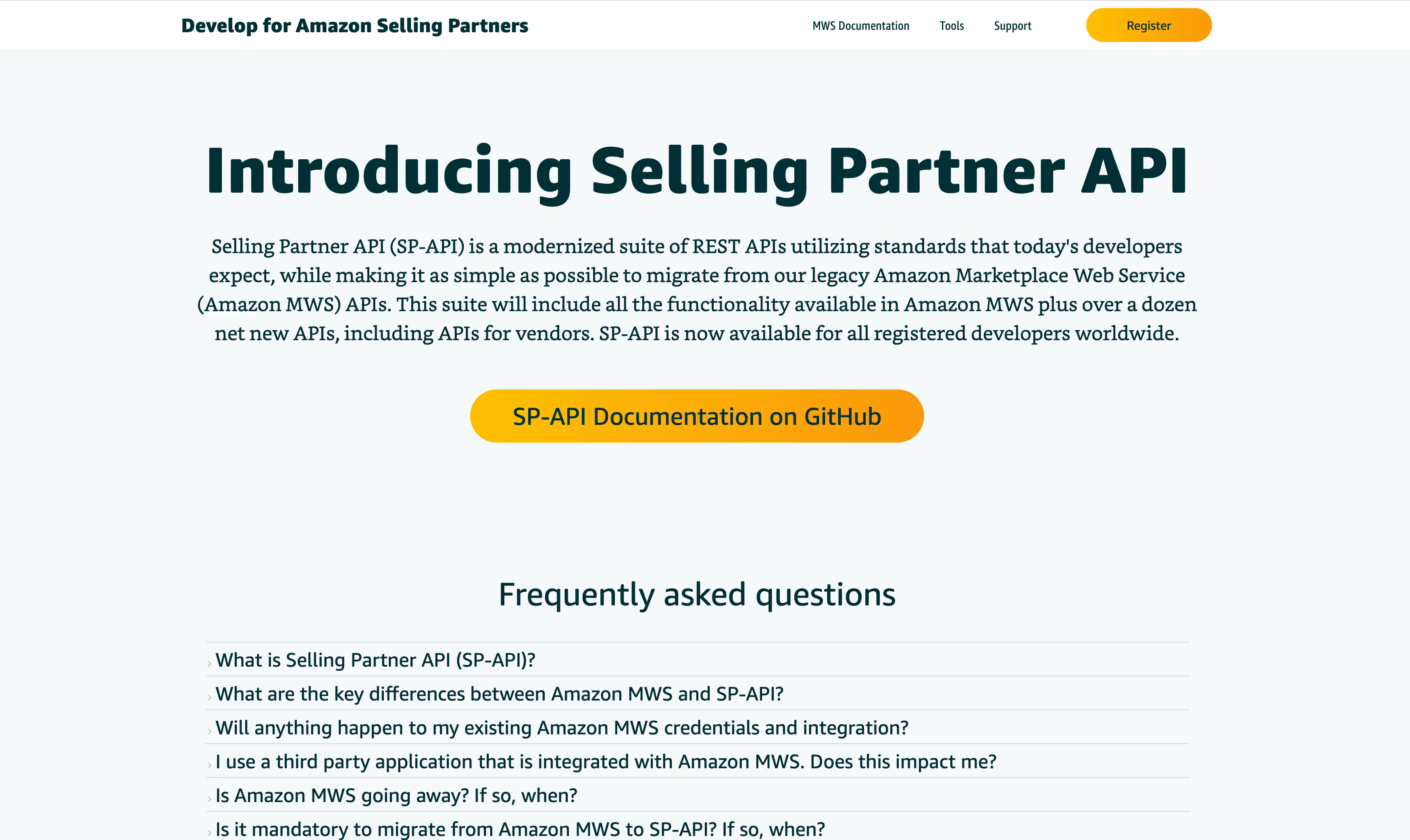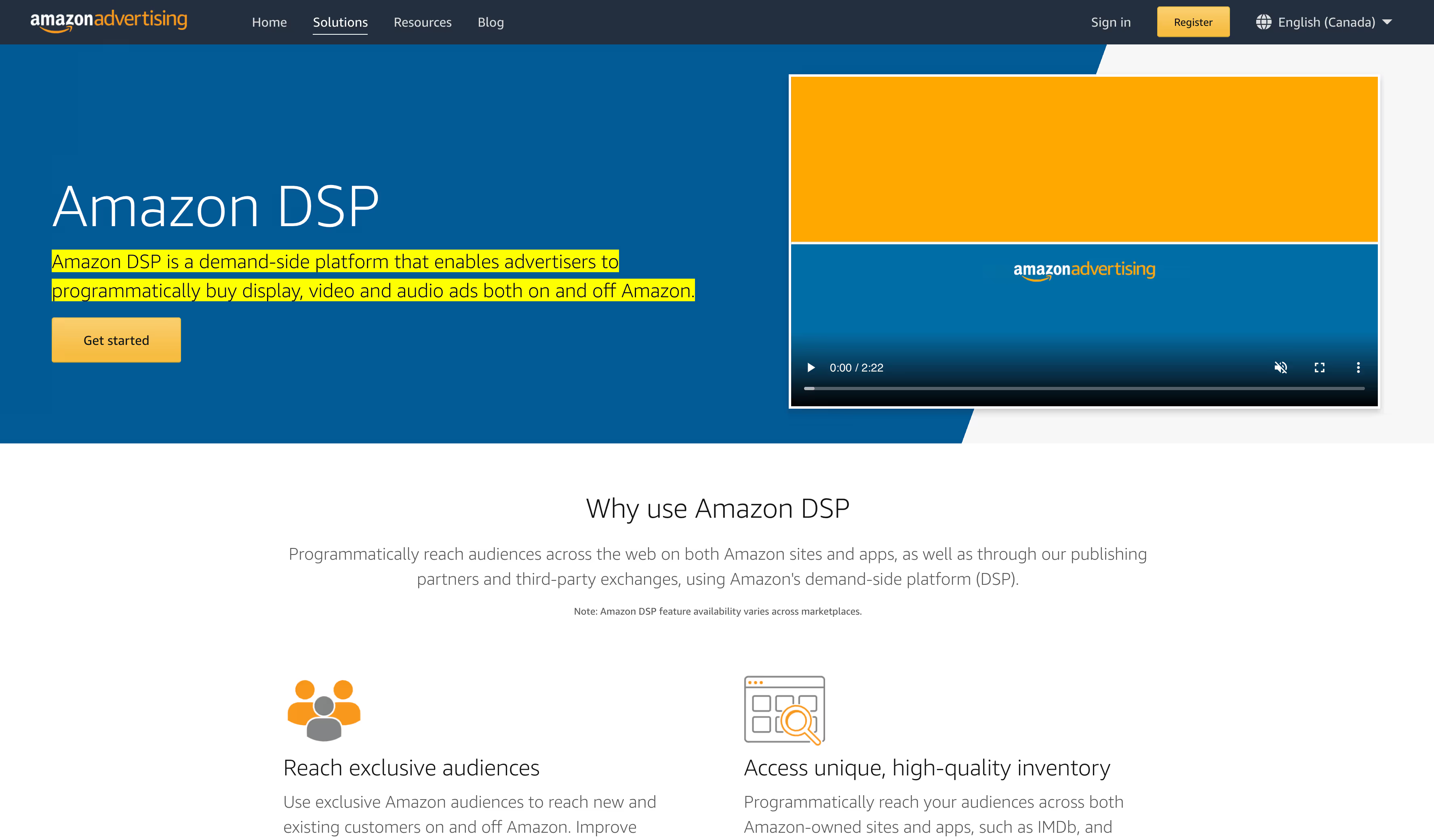Application Programming Interface, or API, is a software that allows two applications to speak to one another. API framework is extremely valuable to the Amazon space, and as many of you already know, our founder Scott Needham began his journey in Amazon developing API tools for BuyBoxer.
As the Amazon space continues to grow and evolve, so do the various API offers for the platform. We wanted to put together a resource guide that can help other developers in the Amazon API space.
Below we’ve compiled a breakdown of what is currently available along with a short comparative analysis of their benefits and shortcomings.
1. Selling Partner API (Amazon MWS API)
This is the main API. This software actually connects to a seller account, and if you’ve ever used Amazon, you’ve likely had to hand over your MWS token. MWS has also been documented to do many of the same things that you can do in Seller Central. The main drawback of this API is that Amazon intentionally does not give you access to all its data. Amazon developers have pretty much confirmed that as well. In particular, you cannot access the report detailing page views and buy box percentage from this API. In fact, you can get throttled for requesting too much. As well, the API limits the offers page by only showing portions of the data.
That being said, there are some really nice benefits to the MWS API. Its reporting is actually quite solid. You have access to approximately 30 downloadable reports that can help you better understand every moving part of your FBA inventory. Another benefit is the SQS, which is how repricers can learn about the competitive offers out there. When one seller changes a price, you can immediately be notified. And finally, the orders are great with this API. The more you can understand about your orders, the more you can automate, forecast, or model your sales.
One lingering question, though, is how to submit prices?! It is possible to offer prices to Amazon using the Feeds section, but at this time, we are unsure if there is any other way to do this. Feeds are limited to only being able to send one every two minutes. SmartScout looks for efficiency and finding ways to do things faster!

2. Product Advertising API
This API is used by Amazon Affiliates. It provides a vast amount of useful data through reviews and content, and even allows the user to put products in a shopping cart. However, one shortcoming here is that Amazon is quite strict about limiting this API to do only what it was designed for, its affiliate program.
In other words, any developer cannot just get in. If you are noticed to be downloading data in a suspicious way, you’ll automatically end up banned. If you’re not getting sales through your affiliate code, you’ll end up throttled.

3. Keepa
This is one of the crowd favorites. It offers so much useful information, yet it seems that Amazon frowns on its use. We believe that if something is publicly available on a website, then it has the ability to be used by whoever wants it. There may be some legal issues about this, but hey, we’re just bloggers! Another drawback is that it is quite expensive at a current rate of 2000 Euro per month. SmartScout offers a bit more fair pricing for the average person.
We also provide a free 7-day trial in which you can learn first hand how unique our software is and how well we stack up against Keepa!
In any case, here are some reasons why Keepa is a favorite.
First of all, Keepa tracks everything historically. So anything that changes on a web page numerically is kept in history. This means that developers can do many things such as rebuild Amazon’s in-stock rates, determine estimate sales ratios for one brand among sellers, and show review changes.
Another great benefit is the search feature. Developers can build tools for wholesalers from Keepa and create entire maps of Amazon, allowing you to search for brands/products or sellers in a novel and unique way.
Finally, Keepa’s product page data is much more accurate than that of MWS. Most sellers know how tricky the product detail pages can be depending on what Amazon decides to show. But with Keepa, you always have access to what’s live on Amazon.
4. Amazon Advertising API
This Amazon API has all things PPC, but not DSP. DSP is a demand-side platform that enables advertisers to buy display, video, and audio ads both on and off Amazon.
It is actually the same API for both vendor and seller central and its actually evolving quite quickly as Amazon enjoys the margins of advertising. The API has pretty much all the same information you can see on the Amazon Advertising dashboard. Most bid optimizers are building technology that they don’t get from Amazon. In fact, Amazon could probably provide more information on suggested keywords and bids as many developers are quite interested in any window into the ad auction that Amazon can provide.
It’s got pretty much everything you can see on the Amazon Advertising dashboard, as Amazon loves the tantalizing margins of advertising. Most bid optimizers are building technology that they don’t get from Amazon. Amazon could certainly provide more info about keywords, suggested keywords, and bids. Any window into the ad auction that Amazon can provide us with would be beneficial for all APIs out there.
This API is plagued by one issue. Sales data takes up to 48 hours to fully settle (sometimes longer). This means that you don’t know what your ACoS is at the end of the day. It’s incredibly frustrating, and it can hamper automation on many levels.

Many services you’re familiar with are reliant on their ability to extract large amounts of data from a website, this is known as scraping, and it’s essential to the performances of API’s. Amazon often tries to stop and limit access, making it challenging to get the real raw data that is needed. No surprise there!
To overcome these challenges, developers often use tools like static residential proxies. These proxies help mask the scraping activity by routing requests through residential IP addresses, making them appear as regular user traffic.
5. SmartScout
Of the many API services, SmartScout. SmartScout tracks brands and all of Amazon's categories. Our API allows for opportunities to track brand revenue growth (and decline). We also have show keyword relevancy so you can understand how related one ASIN is with the next. With millions of products in our database with estimate revenues, there's a lot you can do. Additionally our AdSpy tool allows you to see competitor advertisement win rates.
6. Rainforest API
Whatever your need for web-scraped Amazon product data, Rainforest has it. You can easily integrate Amazon product data, customer reviews, seller offers, search results, category listing results, and bestselling products in your own apps with Rainforest. Now you might be thinking, well this is just like Keepa, which we just talked about. While Rainforest may be similar to Keepa, it actually has more features and offers more web-scraped data. Also, Amazon doesn’t frown on its use as it does with Keepa (maybe because it isn’t as big). Rainforest is also well-known as having a simple interface and being user-friendly. Just take a look here:

7. Sconad
For not being as well-known as the other APIs, Sconad has the largest repository of Amazon ranking, relevancy, keyword, and PPC data available on the market. Number such as 980,000,000 products tracking and 3 Billion+ rows of historical data, it’s easy to see how Sconad has such a massive repository. Used in the backend of whatever service, Sconad helps you conquer whatever task your trying to accomplish.
To learn more about the various APIs, the benefits, drawbacks, and potential of our latest API in SmartSocut, head to the Smartest Amazon Seller Podcast! SmartScout is about providing great products, but we also believe in providing valuable information and conversation to sellers alike!












